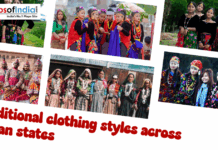Child labourers have historically been a part of the fireworks industry in India, especially Sivakasi. It was way back in 1989 that a reporter named Shubh Bharadwaj had reported about the fireworks industry employing children as workers. A majority of these children were working in the unorganised sector, where small sheds and hazardous working conditions are still prevalent. The bigger businesses do not employ children, and their resources and safety measures are also better than those existing in the small factories.
In 2002, the International Labour Organisation (ILO) had brought out a report stating that the firecracker industry was not the only one where the children were present in significant numbers. The children were also employed in the industries that manufactured incense sticks and matches. In the ILO report, it was also said that the demand for these products had only grown overtime. However, that demand was not being met by the corporate houses or the industrial entities that are a part of the formal economy. Rather, the smaller units, which operate primarily from homes, were and are still increasing in number to meet these demands.
This also implies that with time, more child labourers have been recruited into these industries. The fact that these entities work in a hidden fashion also makes it very hard for any organisation to keep a track of their shoddy activities that employ children. In fact, the extent of danger that these hapless souls face can be guessed from the fact that in 2012, five people including some children lost their lives in an explosion that took place in Sivakasi.
Sivakasi is Synonymous with Child Labour
Outside India, Sivakasi has become synonymous with child labour and this situation has been hard to change in the last few years. A few years back, some activists exposed the fireworks industry over here and their continued employment of children with them. However, the state government is trying its best to redeem the situation by instituting a child labour project, which will try to stop the children from working in the dangerous environment and take up education instead.
Kailash Satyarthi, the winner of the Nobel Prize, had recently said that the industry employs at least one lakh child labourers. However, his claims have been contested by the Tamil Nadu Fireworks and Amorces Manufacturers’ Association. The association’s president has gone as far as to say that since 1982 there has been no child labour in Sivakasi.
Rajagopalan, who acts as the director of Economic and Educational Development Society, has said that the children are primarily employed in home-based units, a fact mentioned earlier. During a survey in 2014, he saw that four to five units at Virudhnagar had employed around 40 children. He has enquired about the steps that the district administrators could take against the home-based entities, while also saying that the children were basically being hidden in the rooms. His opinions have been corroborated by Rakesh Senger, who works for ‘Bachpan Bachao Andolan’, which is headed by Satyarthi.
Senger says that there are some factories where children as young as five years old mix nitrate and sodium with their own hands. The situation is same in some other States like Uttar Pradesh, Chhattisgarh, Andhra Pradesh, Rajasthan, Odisha and Assam. Despite the existence of the Child Labour (Prohibition and Regulation) Act, passed in 1986, as Senger says, there is no fireworks unit in India that does not employ children or where children are not working in some form or the other.
Contact with Hazardous Chemicals
In the fireworks units, the children are supposed to fill the gunpowder into the crackers. In this role, they are always in a direct contact with the various chemicals and worse, they have nothing to protect themselves like gloves, etc. Since their hands are exposed to sulphur, gunpowder and aluminium powder their skins have scalded. As has been stated in a report filed in 2013 by the National Commission for Protection of Child Rights, children suffer from mental issues as well. In the last few years, 237 people have passed away at Sivakasi because of absence of safety norms, and most of them were children.
During the ’90s, the United Nations had brought out a report saying 3,000 people were working in the fireworks industry of Sivakasi, and all of them were in the age group of 6-14 years. Although the numbers have reduced, the problem of child labour still persists. What has further exacerbated the situation is the common consumer propensity in India to buy fireworks, especially the cheaper ones, most of which are made by the home-based units that employ children.
Read Also:
Child safety in India
Amendments in the Child Labour Law
Is Your Child Obese?
Sukanya Samriddhi Account: New Scheme for a Girl Child in India
Child Labour in Diamond Industry
Child Trafficking in India
Employment of Children in Mines
Child labour in India
Beti Bachao Beti Padhao Scheme
Stop Female Foeticide – Save the Girl Child
How to improve the position of girl child in the rural areas of India
Child abuse in India
Child Marriage in India
Life of Street Children in India
Children Safety and Disaster management in schools






